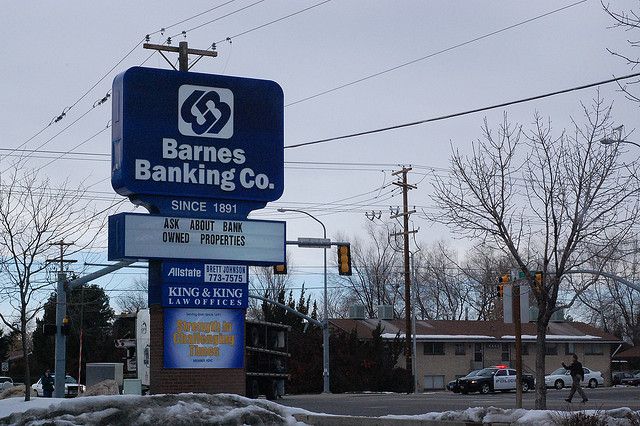We’ve been writing about affordable housing a lot lately — we promise to return to your regularly scheduled programming soon — but Ben Austen’s Times Magazine article on Chicago housing activists raised a lot of questions that we felt needed further examining.
Namely, community groups fixing up foreclosed houses and moving people in.
The Anti-Eviction Campaign has been renovating foreclosed houses in Chicago since 2009, giving people in need places to live. Take Back the Land was profiled in Mother Jones in 2008 for putting homeless people in vacant foreclosed houses in Miami. And there are many other community activist groups across America doing the same.
But is it a viable solution to the affordable housing crisis, or just a protest to the bankers who gambled on American homeowners?
“I think the whole squatting movement, and that’s happened across the country, puts a spotlight that there really is nowhere to go and there is an absolute shortage of units that are affordable to particularly poor people. And particularly very poor people,” said Linda Couch, senior vice president for policy and research at the National Low Income Housing Coalition. “But is it a long-term viable solution? No. Could they be lucky and stay there for some time? Yes. But it’s not stable housing.”
There are vacant, foreclosed houses scattered across America — it’s not just a ruin porn or urban prairie phenomenon — and there are also millions of low-income families and people living in poverty spending the majority of their income on housing. And families that spend the majority of their income on housing are at a greater risk for homelessness. I asked Couch if there was a remedy, or at least some way to make sure that more Americans could find a reasonably priced place to live.
“We need more affordable housing, that’s exactly the answer,” she said. “It’s the obvious solution, from banks and developers, apartment landlords. Everyone in the housing industry is in it for the profit, which is fine, but there’s no profit there when you’re housing someone with a really low income. So the government has to step up and do more to develop housing that’s affordable for really, really poor people. Not just teachers and firefighters and police officers, but people making $10,000 or $15,000 a year, if that.”
It’s clear that squatting in foreclosed homes, whether they’ve been fixed up or not, is a temporary solution. It’s unstable. The sheriff or the bank could show up and kick inhabitants out any day. But there are vacant, foreclosed homes all over America and — here we go again — many, many people who need an affordable place to live. The community organizations moving people into these foreclosed houses are a godsend. Eventually, though, the bank or a new owner is going to come in and change the locks. Is there a way to make it economically viable to claim the homes as permanent affordable housing? Should the government help support the non-profit organizations that have come in and done it on their own terms? Or is it better if it just stays the wild, wild west?
This week’s Forefront story explores whether single-room occupancy units should be reconsidered as a strategy for solving urban housing woes. The story also looks at how New York Mayor Mike Bloomberg tinkered with zoning policy to develop a new breed of teeny housing. Though not as affordable as many would have it, Bloomberg’s micro-units represent what happens when government begins to look at what their constituents are already doing — squeezing into ever-tighter spaces in order to make them affordable — and developing policies accordingly. In other words, turning a grassroots solution in public policy.
“In the absence of some formal solutions, I think it’s really smart to pay attention to how communities are solving problems on their own,” said Rosanne Haggerty, president of Community Solutions. “And are there ways to make that workable for everybody?” Haggerty cut her teeth turning ramshackle Times Square Hotel, a historically poorly-run SRO, into a respectable place for formerly homeless individuals to make a life.
I’m not saying that squatting in foreclosed homes or developing micro-units or SROs is going to be the solution to the affordable housing crisis, but all are local responses worth looking at as the housing market recovers without taking all communities with it.
The Equity Factor is made possible with the support of the Surdna Foundation.

Bill Bradley is a writer and reporter living in Brooklyn. His work has appeared in Deadspin, GQ, and Vanity Fair, among others.

















